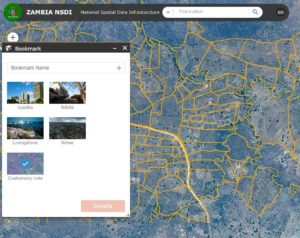
Though over half of Zambia’s population of seventeen million citizens relies on agricultural land for their livelihood, Zambia’s national land information system houses less than 200,000 records of landholdings. Historically, the Ministry of Lands has had no records of individual landholdings from the over 70 percent of the country that is managed by Zambia’s 288 customary chiefs. This divide between state land administration and a largely undocumented customary land administration system has been blamed for many of the land disputes that have proliferated across the country over the past twenty years.
Recognizing the need for a modern and publicly accessible map of land allocations, in 2014 Zambia embarked on a National Land Audit and the creation of a repository for land data through a National Spatial Data Infrastructure. However, with respect to agricultural landholdings, the Audit and NSDI were limited to titled state land within the Ministry of Lands, leaving much of the country undocumented.
Enter the USAID Tenure and Global Climate Change Program and its partners in the Chipata and Petauke District Land Alliances. Five chiefs in these two districts requested assistance to undertake bottom-up processes for mapping chiefdom boundaries and household land allocations. From 2014 to 2017, over 500 villages across Chipata and Petauke Districts mapped over 15,000 parcels of household lands and identified owners and persons of interest associated with each parcel. Through collaboration with chiefs and sharing of data processes and technologies with the Ministry of Lands, trust was built with respect to the quality of community-driven customary maps. With the launch of the NSDI in December 2017, the government of Zambia placed customary parcels on the same map with its national cadaster, representing the first time this data has been available on a publicly accessible platform.
As more chiefs request assistance in undertaking audits of their customary land, the utility of the NSDI to both protect people’s rights and identify opportunities for productive investments will be realized.

